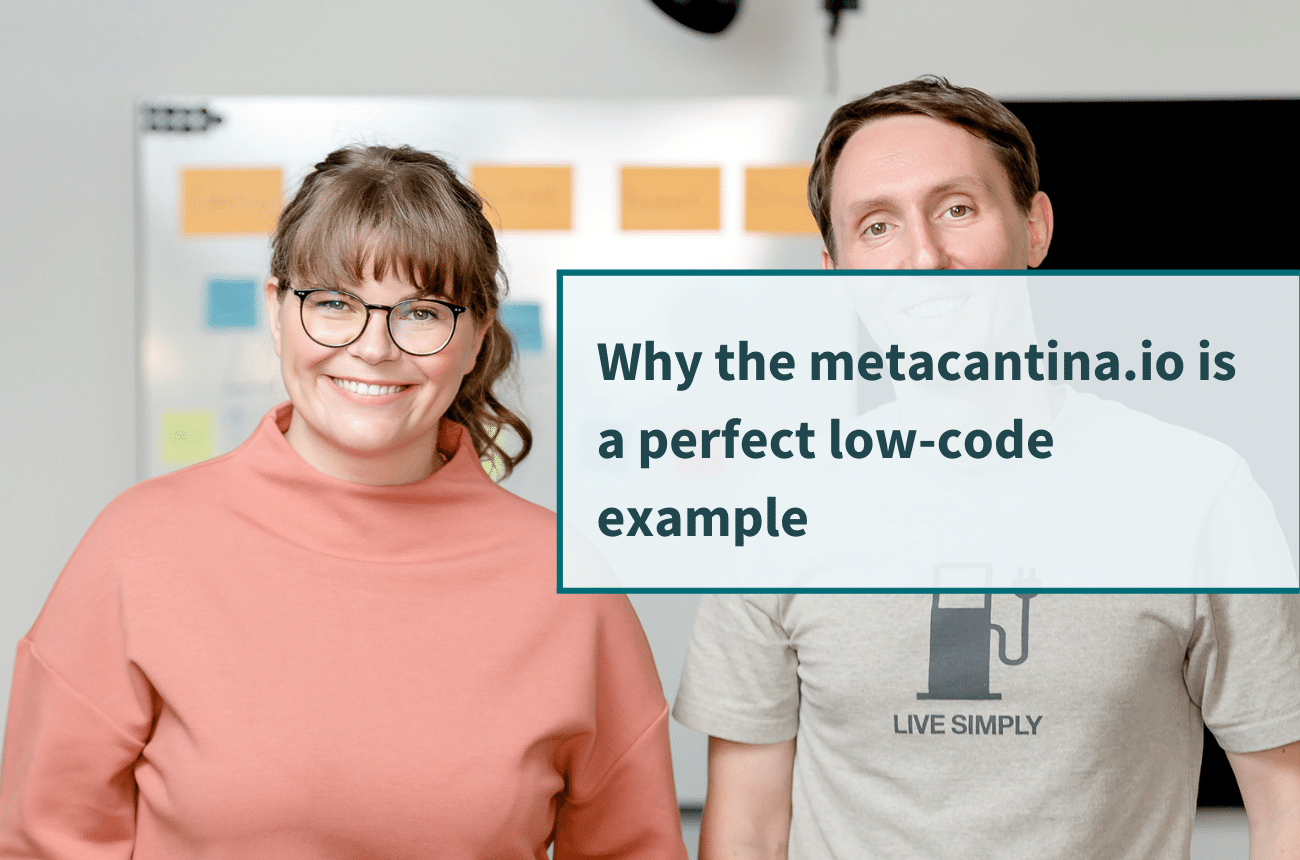

For full transparency. We are the developer of the metacantina.io - a platform where you can find the right scholars for your Axie Infinity scholarships. In the future, you will have more features to completely manage your Axie Infinity team. In this article, we will have a look behind the scenes. Why do we develop a crypto scholarship platform for PlayToEarn games like Axie Infinity? Why do we use low-code to develop such platforms? Can the metacantina.io be a low-code example that is inspiring for you?
Stay tuned. Let's go.
You may wonder what the metacantina is all about. Let me tell you this, it wasn't easy for us to come up with a sophisticated name. With the metacantina we want to build a place where everyone can meet and participate in the PlayToEarn economy (like Axie Infinity, Derace, Star Atlas or Vulcan Verse). We want to make it more attractive to be a scholarship manager or an Axie Infinity scholar by reducing the time-consuming administrative tasks. The metacantina is an online meeting space where everyone finds their place and can benefit fairly.
We are a low-code development agency that loves to develop innovative digital products. We are always challenging the status quo when it comes to new technologies and processes. Once we heard of Axie Infinity we were completely impressed by the economy, which was built around Axie Infinity. However, we saw a lot of inefficient and non-transparent processes going on for the allocation of scholarships.
With our software development skills, we decided to develop the metacantina to help managers and scholars in order to have a fairer and more transparent process. We are supporting the Axie Infinity community and the opportunities it gives to many people around the world.
We are using low-code for all our projects, even though we could code it ourselves. Due to our experiences in developing software products and digital business models, we know how important it is to have a first MVP built as soon as possible. This is not just being fast. This is about getting customer feedback and validating your hypothesis as soon as you can. Yes, we do save a lot of time and money when using low-code, but the real advantages are flexibility and adaptability.
Low-Code doesn't limit us in any way. Whenever we will hit a low-code boundary, we will use custom-code to overcome it.
Is low-code the answer for every problem? Unfortunately not. There are use cases that benefit more from the low-code advantages. While others are better off with custom code.
Generally speaking, platform business models such as the scholarship system with the Metacantina.io are very suitable for low-code. Whenever you need a system where users can sign up, enter something (jobs, scholars, rentals) and another user does something with it (list, book, vote) low-code is perfect for you. Low-code examples are often seen are marketplaces, job boards, on-demand services, or Software as a Service platforms.
The real value of low-code for the metacantina, however, was something else. We wanted to try out an idea fast and without an enormous budget. There simply wasn't a similar application existing. We had absolutely no idea whether our idea would work out. Of course, we asked another Axie Infinity manager, but that doesn't count here.
From day one, it was clear that we required the possibility to develop fast at the beginning, but also once we have the first customers on board. We now have the possibility to get in touch with users who are actually using the system. This helps to identify the real customer pain points where you can find solutions.
Developing a SaaS application or other software products requires you much more than just creating the product. You need to think about the market, the customers, the business models and of course you need to attract users. While they are a million textbooks describing single parts of it, we wanted to build everything in public in combination with low-code and Bubble. In our minds, people require more guidance for the whole process.
So we did a kind of documentary for all steps required to develop a SaaS application.
Enjoy the Youtube playlist and explore how to build a SaaS product as a low-code example.
The answer is simple - it depends. Most likely yes. Maybe you would need to integrate custom code on top of your low-code application. Either way, it is absolutely worth checking out whether you can use low-code for an MVP or for single parts of your application.
Yes, you can combine low-code with custom code very nicely. If you need help, please reach out to us.

Erzähle uns in einem kostenlosen Erstgespräch mehr über dein individuelles Projekt. Wir helfen dir bei den nächsten Schritten und teilen unser Wissen.
Nachricht schreiben